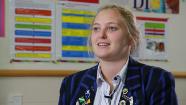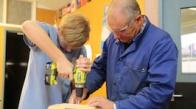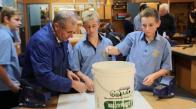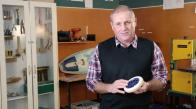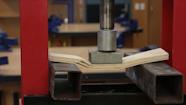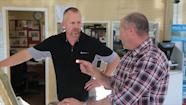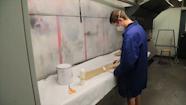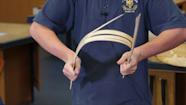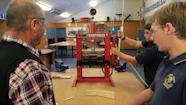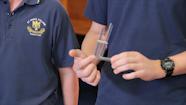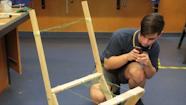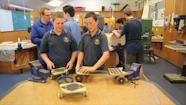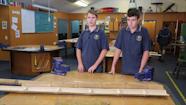Julie Clement shares how a design focus has engaged her students.
A technology department with a digital and design focus
Transcript
Julie Clement: Four years ago we had the opportunity to establish a department. Until then the subjects were fragmented, unit standard based and numbers were dropping. My vision then for a new department was to have a design and digital focus. Essentially with authentic programmes that were engaging and weren’t driven by assessment. I come from a design background and the girls indicated that this is an area that they were particularly interested in, that they found engaging.
Student One: I really enjoy design and fashion, I have a passion for it, design is such a fundamental part of society, it’s all around us from the products to the buildings, it’s all around us and I believe we can make a difference with design, implementing sustainability and innovation.
Julie Clement: So the vision was driven by our new facilities, which was a generic open planned environment, similar to English and Social Sciences, so not purposeful in any way, so that lead to the digital focus and me also thinking about how we could equip such a department, when we basically had no equipment. I was thinking about makerspaces. People work like this so I thought why, why not us. So this focus has worked because we’ve been able to engage the parents and the girls in authentic briefs. They really value the opportunity to work with the universities, to work with design experts. We have fashion designers who come in and mentor, so our learning community really values those skills. They see the subject as being really contemporary and innovative in our approach.
Student one: I can see a connection between my passion for design that I do at school and what I’m planning to do after school.
Student two: I found it really interesting to see the design process at Massey and comparing it to what we do.
Julie Clement: So the programmes are really relevant to the girls and to the world that they are living in, and that’s why we are getting the buy in.
Student three: I think it’s really different from my other subjects, just because it, you actually see a result, you can go through the process and have a practical result that you can see at the end, and it’s working through the process and doing all the logical steps and the problem solving and everything in the trialling techniques for an actual purpose at the end for a client or whatever the brief happens to be.
Julie Clement: The design process runs through our teaching and learning programmes, so even though we have this real digital design focus, the girls are still manufacturing both at here and school and outsourcing. So students may like to take more than one or two creative subjects, so keeping the boundaries clear between the curriculum areas, is both beneficial to your subject and the others that the girls might like to take, because it enriches their learning.
Student three: I plan to go and study engineering and science at university, and I think a lot of the skills in design are very applicable and transferrable, because you work through your process and there are logical steps and there’s a lot of problem solving. You have to work out how to solve a problem for an actual need or to produce something for a client and I think it’s really a transferrable skill for life.
Student four: So at Wellington Girls’ the digital design technologies we learnt really helped me when coming to university, as I felt it’s a really smooth transition in from school. It really helped me to learn the machines such as the 3D printer. When I came here I knew how to use it, what it did and lots of other students in my class didn’t really know what they were. I was really lucky to be able to have this knowledge from my school transitioning into Massey.
Related videos
A year 13 student talks about her career pathways (00:55)
A student shares about combining her interests in law and food technology.
Combining knowledge and practice (01:58)
Steve Andrew explains how understanding materials is essential for effective technological practice.
Linking hands-on experiences and understandings (03:54)
Hands-on experiences allow the students to see materials understandings in action.
Play, experiment, explore (02:55)
Steve Andrew lets the students see, feel, and play with products to develop their understandings in materials.
Finding materials to meet the specs (02:36)
Steve Andrew shares how students identify material specifications in a brief and then test materials to find those that are suitable....
School–industry relationship cuts both ways (03:36)
Steve Andrew and Terry Rillstone describe the way the relationship between St John's College and The Shop has benefits for them both....
Pushing the boundaries with materials (02:53)
Steve Andrew describes how his senior students have the confidence to select and work with unfamiliar materials.
Exploring unfamiliar materials (02:44)
Year 12 students from St John's College describe what they know about bamboo and how they are applying this knowledge to their projects....
Students and teachers talk about testing materials in year 11.
Manipulating, forming, and transforming
Students in year 10 describe manipulating, forming, and transforming materials.
Evaluating materials for an outcome
Steve Andrew and students talk about using their knowledge to test materials for their projects at year 12.
Year 10 students describe some of the attributes for the snake skates they are developing.
Senior students select their own issues
Year 12 students talk about the issues that they have selected for their projects.

